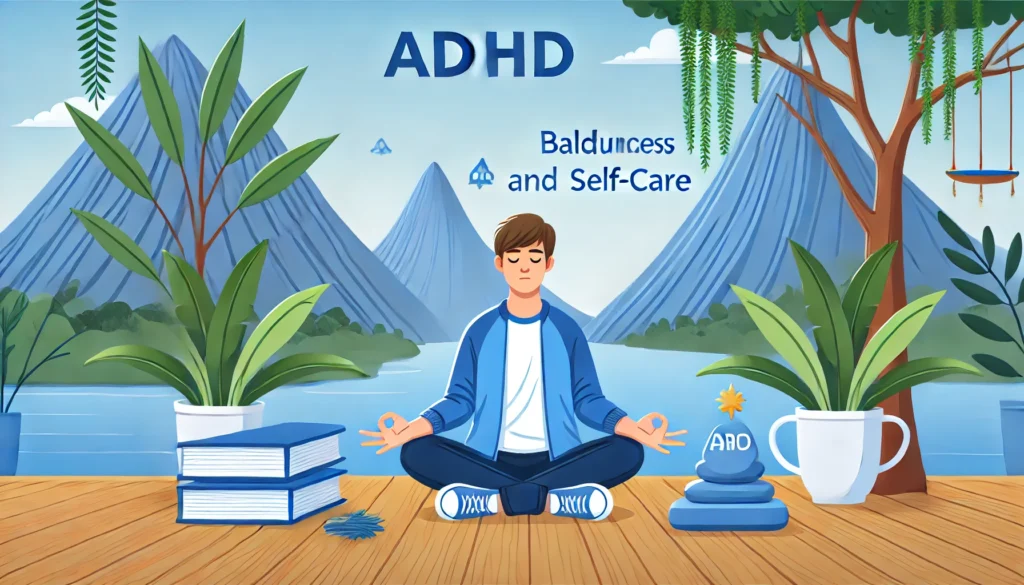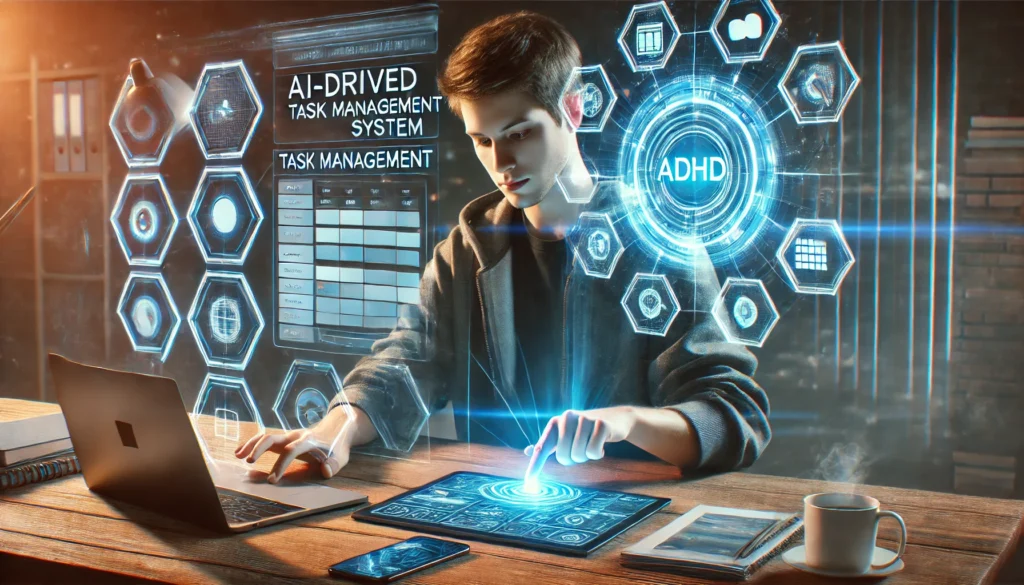ADHD is a neurodevelopmental disorder characterized by symptoms such as inattention, hyperactivity, and impulsivity. While these traits can present challenges in academic settings, they can also be reframed as strengths. For instance, individuals with ADHD often exhibit high levels of creativity, energy, and resilience. Recognizing these strengths is the first step towards developing effective strategies for success.
You may also like: Enhancing Concentration: Strategies for ADHD
Historical Context
Historically, ADHD was often misunderstood and stigmatized, leading to misconceptions about the capabilities of individuals with the disorder. Early perceptions painted ADHD as a lack of discipline or motivation rather than a neurodevelopmental condition. This misunderstanding often resulted in punitive measures instead of supportive interventions.
As time progressed, the late 20th century saw advancements in neuroscience that began to reshape our understanding of ADHD. Researchers started to uncover the biological underpinnings of ADHD, linking it to brain function and genetic components. This scientific evolution has gradually shifted societal views, promoting a more empathetic and informed approach to managing ADHD.
Today, the legacy of past misconceptions still lingers, but the growing body of research continues to dispel myths, advocating for evidence-based strategies and interventions. This historical shift sets the stage for more supportive and effective educational practices.
Current Trends
Today, there is a growing recognition of the diverse abilities of individuals with ADHD. Educational institutions are increasingly adopting inclusive practices that accommodate different learning styles, thereby creating an environment where students with ADHD can thrive. Personalized learning plans, assistive technologies, and flexible teaching methods are just a few examples of the strategies being implemented.
Educational models are now embracing Universal Design for Learning (UDL), which aims to provide equal learning opportunities for all students, including those with ADHD. This approach includes offering multiple means of engagement, representation, and action and expression to cater to diverse needs.
Moreover, the integration of technology into education has opened up new avenues for customized learning experiences. Digital platforms and resources allow for tailored educational pathways, enabling students with ADHD to learn at their own pace and in ways that suit their strengths.
Parental and community involvement has also become a focus, as schools work to build strong partnerships with families. This collaboration ensures that strategies extend beyond the classroom, creating a cohesive support network for students with ADHD.
The Role of Neuroplasticity
Neuroplasticity, the brain’s ability to reorganize itself by forming new neural connections, plays a significant role in understanding ADHD. This concept offers hope that targeted interventions can lead to positive changes in behavior and cognitive function.
Research on neuroplasticity has shown that the brain can adapt and compensate for challenges associated with ADHD. Through consistent practice and reinforcement, students can develop new skills and habits that enhance their academic performance.
Educational programs are increasingly incorporating activities that stimulate neuroplasticity, such as mindfulness exercises, cognitive training, and physical activity. These interventions not only support academic success but also promote overall well-being.
Understanding neuroplasticity underscores the potential for growth and improvement, reinforcing the message that ADHD is not a fixed limitation but a dynamic aspect of one’s cognitive profile.

Strategies for Academic Success
Time Management and Organization
Effective time management and organizational skills are crucial for academic success, particularly for students with ADHD who may struggle with executive function tasks. Here are some strategies to consider:
- Use Visual Aids: Visual schedules, planners, and to-do lists can help students track their tasks and deadlines. Digital tools like calendar apps and task management software can also be beneficial. Visual aids provide a concrete reference point, reducing the cognitive load of remembering tasks and deadlines.
- Break Tasks into Smaller Steps: Large assignments can be overwhelming, so breaking them into smaller, manageable tasks can make them more approachable. This approach not only simplifies the process but also provides frequent opportunities for positive reinforcement as each step is completed.
- Set Realistic Goals: Establishing achievable goals helps maintain motivation and provides a sense of accomplishment. Setting specific, measurable, achievable, relevant, and time-bound (SMART) goals can guide students in managing their workload effectively.
- Prioritize Tasks: Teaching students to prioritize tasks based on urgency and importance can help them focus on what needs immediate attention. Developing a priority matrix can assist in differentiating between tasks that are essential and those that can be deferred.
- Implement Routine Check-ins: Regularly scheduled check-ins with teachers or mentors can provide accountability and support. These sessions offer a chance to review progress, adjust strategies, and celebrate successes.
Enhancing Focus and Concentration
Maintaining focus can be challenging for students with ADHD. The following techniques can help improve concentration:
- Create a Conducive Study Environment: Minimize distractions by choosing a quiet study area and using noise-cancelling headphones if necessary. Personalizing the study space with motivational elements can also enhance focus.
- Incorporate Movement: Short breaks for physical activity can help release pent-up energy and improve focus. Activities like stretching, walking, or using a standing desk can be seamlessly integrated into study sessions.
- Use the Pomodoro Technique: This time management method involves working for a set period, typically 25 minutes, followed by a short break. It can enhance productivity and concentration. The structure of the Pomodoro Technique provides regular intervals of focused work, reducing the likelihood of burnout.
- Mindfulness and Meditation Practices: Incorporating mindfulness exercises or meditation into daily routines can help students with ADHD develop greater awareness and control over their attention. Simple practices like deep breathing or guided imagery can be effective.
- Variety in Learning Methods: Engaging with material through different mediums, such as videos, interactive activities, and hands-on projects, can maintain interest and improve retention.
Leveraging Technology
Technological advancements have provided numerous tools that can assist students with ADHD in managing their academic responsibilities:
- Educational Apps: Apps like Evernote, Trello, and Forest can help students organize their tasks, take notes, and stay focused. These apps often feature reminders and notifications that keep students on track.
- Assistive Technology: Tools such as speech-to-text software and audiobooks can accommodate different learning preferences and needs. These technologies provide alternative ways of processing information, catering to diverse cognitive styles.
- Online Resources: Websites and online platforms offer a wealth of information and support tailored to the needs of students with ADHD. These resources may include online courses, forums, and communities where students can share experiences and strategies.
- Gamified Learning Platforms: Leveraging the motivational aspects of gaming, these platforms can engage students with ADHD in a fun and interactive way. Gamification elements such as rewards, levels, and challenges can enhance learning experiences.
- Virtual Reality (VR) and Augmented Reality (AR): These emerging technologies offer immersive learning experiences that can capture the attention of students with ADHD and provide unique opportunities for exploration and engagement.

Building a Support Network
A strong support network is vital for students with ADHD. This network can include family members, teachers, counselors, and peers who understand and support the student’s unique needs. Open communication and collaboration among these stakeholders can ensure that students receive the necessary accommodations and encouragement to succeed.
Role of Educators
Educators play a pivotal role in supporting students with ADHD. By creating an inclusive classroom environment and employing differentiated instruction techniques, teachers can cater to diverse learning needs. Providing positive reinforcement and constructive feedback can also boost students’ confidence and motivation.
Educators can also facilitate peer support by fostering a classroom culture of empathy and understanding. Encouraging group work and collaborative projects can help students with ADHD build social skills and connections.
Professional development for educators is crucial in equipping them with the knowledge and skills needed to support students with ADHD. Training sessions on ADHD-specific strategies and interventions can enhance teachers’ ability to address diverse needs effectively.
Importance of Counseling and Therapy
Counseling and therapy can provide valuable support for students with ADHD, helping them develop coping strategies and address any emotional or psychological challenges. Cognitive-behavioral therapy (CBT), for example, is an evidence-based approach that has been shown to be effective in managing ADHD symptoms.
Therapists can work with students to develop personalized coping mechanisms that address their specific challenges. These strategies may include techniques for emotion regulation, stress management, and communication skills.
Family therapy can also be beneficial in addressing the dynamics within the home that may impact a student’s academic performance. Involving family members in the therapeutic process can create a supportive environment that reinforces positive changes.
In addition to traditional therapy, alternative approaches such as art therapy or music therapy can provide creative outlets for self-expression and emotional processing.
The Role of Peers
Peers can play a significant role in supporting students with ADHD by offering friendship, understanding, and collaboration. Encouraging peer mentoring programs can create opportunities for students with ADHD to receive guidance and support from fellow students.
Social skills training can help students with ADHD navigate interpersonal interactions and build meaningful relationships. These programs focus on developing communication, empathy, and conflict-resolution skills.
Creating inclusive extracurricular activities that cater to diverse interests can provide students with ADHD opportunities to engage with peers in non-academic settings. These activities can build confidence and foster a sense of belonging.

Future Implications
As our understanding of ADHD continues to evolve, so too will the strategies and resources available to support students with the disorder. Advances in neurotechnology, personalized education, and digital learning tools hold promise for further enhancing the academic success of students with ADHD.
Embracing Neurodiversity
The concept of neurodiversity celebrates the diverse ways in which human brains function, recognizing that differences such as ADHD contribute to the richness of human experience. By embracing neurodiversity, we can create more inclusive and supportive educational environments that empower all students to succeed.
Advocating for neurodiversity involves challenging societal norms and stereotypes that define success in narrow terms. By broadening our understanding of intelligence and ability, we can appreciate the unique contributions of individuals with ADHD.
Educational policies and practices that prioritize neurodiversity can lead to more equitable outcomes for all students. This shift requires collaboration between educators, policymakers, and communities to create systems that value and support diverse learning needs.
Technological Innovations
Emerging technologies offer exciting possibilities for enhancing learning experiences for students with ADHD. Artificial intelligence (AI) and machine learning can personalize educational content, providing tailored recommendations based on individual learning profiles.
Virtual reality (VR) and augmented reality (AR) can offer immersive learning environments that engage students in new and dynamic ways. These technologies have the potential to transform traditional educational models and create more interactive experiences.
The integration of wearable technology can provide real-time feedback on attention and focus, allowing students to self-regulate and make adjustments to their learning strategies. These tools empower students to take an active role in managing their educational journey.
The Future of Education
The future of education for students with ADHD will likely involve a blend of traditional and innovative approaches. Blended learning models that combine in-person and online instruction can offer flexibility and customization to meet diverse needs.
The development of global networks and communities can facilitate the sharing of best practices and resources, fostering collaboration and innovation in ADHD education. These connections can drive positive change and support continuous improvement in educational practices.
As we move forward, it will be essential to prioritize the voices and experiences of students with ADHD, ensuring that their perspectives inform the development of educational policies and practices. By centering the needs of these students, we can build a more inclusive and equitable future for all learners.
Conclusion
Success is not only possible for students with ADHD; it is achievable with the right strategies and support systems in place. By leveraging their strengths, utilizing effective techniques, and building a robust support network, students with ADHD can navigate the academic landscape with confidence and resilience. As educators, parents, and peers, it is our responsibility to champion their potential and celebrate their achievements.
In conclusion, the journey to success for students with ADHD is one of empowerment, resilience, and collaboration. By embracing a holistic approach that combines scientific insights with practical strategies, we can pave the way for a brighter future for all students. The commitment to supporting students with ADHD is a shared responsibility that requires understanding, innovation, and compassion. Let us continue to work together to unlock the potential of every student, creating a world where diversity is celebrated and all learners can thrive.
Further Reading:
8 Simple Strategies for Students With ADHD
My 25 Rules for Life: A Practical Cure for ADHD Shame and Stagnation
Teaching Strategies for Students with ADHD: Ideas to Help Every Child Shine
Important Note: The information contained in this article is for general informational purposes only, and should not be construed as health or medical advice, nor is it intended to diagnose, prevent, treat, or cure any disease or health condition. Before embarking on any diet, fitness regimen, or program of nutritional supplementation, it is advisable to consult your healthcare professional in order to determine its safety and probable efficacy in terms of your individual state of health.
Regarding Nutritional Supplements Or Other Non-Prescription Health Products: If any nutritional supplements or other non-prescription health products are mentioned in the foregoing article, any claims or statements made about them have not been evaluated by the U.S. Food and Drug Administration, and such nutritional supplements or other health products are not intended to diagnose, treat, cure, or prevent any disease.


